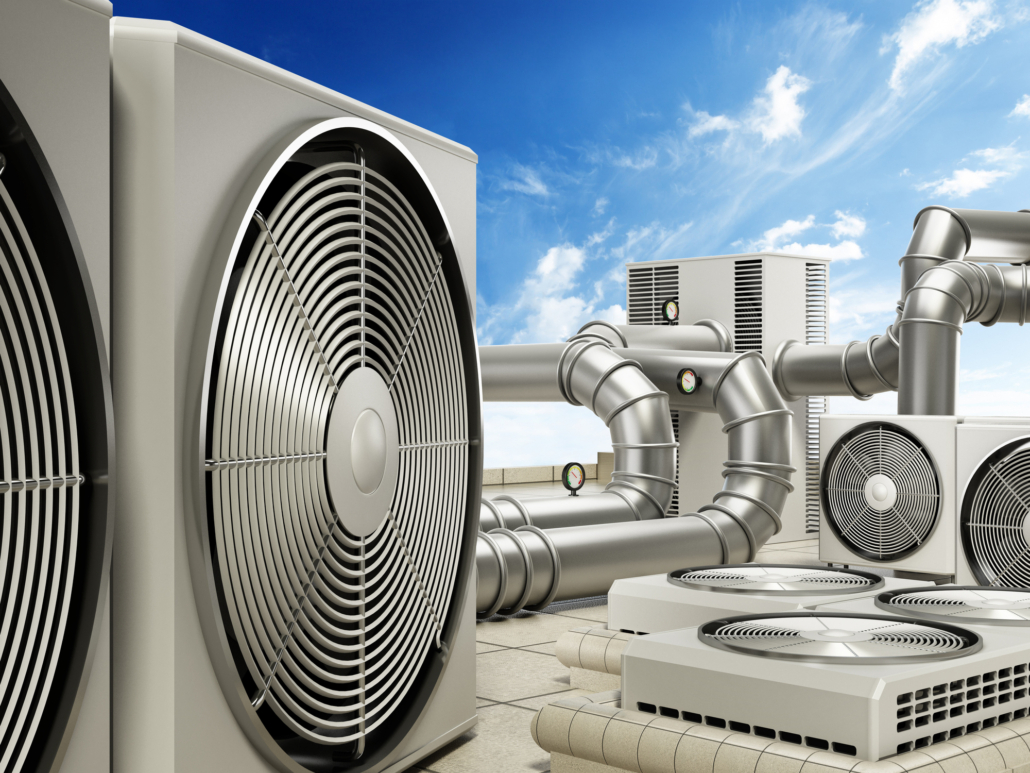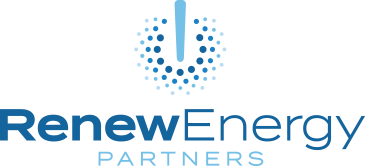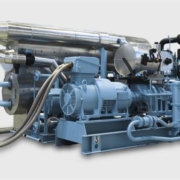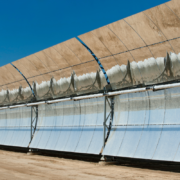The Blog
HVAC Energy Efficiency Retrofits: The Basics

RENEW Energy partners specializes in helping fund your energy saving retrofits for your commercial, industrial, and institutional buildings. There are many different technologies we can install to make your buildings more efficient and reduce your energy bill. One place to deliver significant savings is by heating and cooling your building more efficiently, with energy efficiency retrofits to your Heating, Ventilation, and Air Conditioning “HVAC.”
Last month we discussed the history of HVAC, a story where Willis Carrier’s practical solution to too much humidity in a publishing factory led to the first mass-produced Cooling and Ventilation System. Today, HVAC systems continue to get more efficient, regulating climates throughout modern buildings.
HVAC Retrofits
For energy efficiency retrofits, the first places you need to look are the upgrades that will save you the most money. You should aim for an HVAC system that is at least 80% efficient. If your HVAC is not as efficient, updating your system will reduce your energy bills. When updating your HVAC, you need to think about the following:
Basic Energy Efficiency Retrofits
-
- Economizers:
- An economizer is a part of the outdoor system, most often mounted on the roof, of an HVAC system for commercial buildings. The economizer evaluates outside air temperature and even humidity levels. When the exterior air levels are appropriate, it uses the outside air to cool your building. HVAC economizers use logic controllers and sensors to get an accurate read on outside air quality. As the economizer detects the right level of outside air to bring in, it utilizes internal dampers to control the amount of air that gets pulled in, recirculated and exhausted from your building. It saves on energy, helps your A/C last longer, and improves air quality.
- Compressor/Condenser
- The compressor reduces the volume of gas to add pressure to it. The compressor uses more power than any other component of an air conditioner, cutting down on how much power it uses helps immensely with increasing energy efficiency. Upgraded compressors provide the ability to operate at a lower capacity with controls that include Variable Frequency Drives.
- An HVAC condenser takes the pressurized gas and turns it into liquid vapor.
- Condensers and compressors should be upgraded at the same time to create the most efficient system possible.
- Condensate Recovery
- In a typical commercial air conditioning system, warm, humid air from the building is run over a cold air handler that cools the air. When this is done, condensate water is created and recovered for reuse. A drip pan collects this relatively clean water, and it is discharged to a sewer.
- With condensate recovery, that water is diverted to the cooling system, helping the system run more efficiently.
- Duct Insulation/Duct Sealing
- To prevent air leaks, duct sealing is necessary along the entire length of the ductwork system. Air leaks in your ductwork system can account for a significant loss of energy and money, especially larger systems in commercial buildings. The most insulated method of construction continues to be pioneered by the Passive House International construction standard.
- Duct Size Optimization
- Oversized Ducts: Larger than normal ducts are certainly capable of handling more airflow. But your HVAC system may not be equipped to pump that much air. In fact, your system needs a specific air pressure in the ductwork to properly distribute air. Oversized ducts could cause your HVAC system to work too hard and limit the amount of conditioned air that reaches your home. Forcing your system to work harder than it should leaves it prone to breakdowns and increases your energy usage.
- Undersized Ducts: If your ducts are too small to accommodate the air flowing through them, the pressure increases and backs up in the system. This causes resistance for the blower fan, reducing your HVAC system’s efficiency and longevity. Over time, this can lead to significant stress on the components and can inevitably lead to a breakdown.
- Duct Sizing Method: The Manual D Sizing Method is the industry standard that was developed by the Air Conditioning Contractors of America. This method involves evaluating the individual rooms in your home to determine optimal airflow, control excessive noise, seal ductwork, provide insulation, and retrofit the design as needed. This all works to correct pressure imbalances and ensure your system runs as efficiently as possible to supply each room of your home with adequate, conditioned airflow.
- Variable Air Volume (VAV)
- Variable air volume (VAV) systems enable energy-efficient HVAC system distribution by optimizing the amount and temperature of distributed air. Appropriate operations and maintenance (O&M) of VAV systems is necessary to optimize system performance and achieve high efficiency.
- Economizers:
-
- Heating and Cooling Recovery
- This is the process of recovering excess thermal energy that would otherwise be emitted, in order to use it as energy and reduce your overall consumption.
- Thermal energy can be recovered from water, air, or a ground source.
- This can also fall under the umbrella of CHP (Combined Heat and Power), which could further reduce energy usage.
- Heating and Cooling Recovery
Chiller Upgrades.
For energy efficiency retrofits, it is important to specifically think about how your building is cooled. Freezer storage alone makes up about one percent of global emissions. Here are a few things to think about:
-
-
- Chillers can be regulated by air or water. Air chillers are less expensive but use more energy.
- Water chillers must be efficient and up to date to conserve and reuse water, but when maintained, are much more energy efficient.
- Chiller Controls
- The most efficient ones we can install include Variable Frequency Drives (VFDs) that regulate the amount of energy needed throughout the day depending on internal and external temperatures.
-
-
- Modular Chillers
- Modular chillers are ideal because each module can operate independently from each other. If one module fails, the other can continue to run. This is ideal for efficiency and maintenance.
- Modular Chillers
-
- Heat Recovery Chillers
- If heating and cooling are needed at once, heat recovery chillers can allow for the heat they emit to be redirected to other energy sources. These chillers don’t always get hot enough for cold climates but are ideal for mixed use spaces.
- Heat Recovery Chillers
Conclusion
To summarize, when contemplating energy efficiency retrofits, updating your HVAC systems is a crucial way to decarbonize and save money. Additional savings can be made by implementing water saving retrofits. The most ideal systems interact with each other and redirect excess energy for further use. An energy management system and variable frequency drives can help you control and monitor your HVAC effectively so that it does not have to run at full capacity 24 hours a day. Stay up to date about HVAC energy efficiency retrofits by reading our most recent article on the future of HVAC retrofits. Finally, keep your buildings and pipes well-insulated to prevent energy leakage.
No matter how you decide to increase your energy efficiency and decrease your carbon footprint, these kinds of project require funding. In order to fund an energy efficiency project for your building(s), RENEW Energy Partners offers an energy service agreement (ESA). The Energy Service Agreement:
- Is an off-balance sheet transaction. You do not own the asset or carry it on your balance sheet.
- RENEW provides preventive and corrective maintenance in the service agreement.
- Your payment to RENEW will be based on the energy savings confirmed once the system is operational.
Unlike a lease or a loan, which are on balance sheet, do not include maintenance, and may or may not deliver energy savings, the service agreement provides all of the above and then some:
- Executing a service agreement is fast – once the project is scoped by an energy professional (and we can recommend one), you execute a simple service agreement contract and RENEW will fund the project.
- Executing a service agreement frees up your capital budget for your other priorities, allowing you to focus on growing your core business.
- Executing a service agreement now means your net cash flows are higher than waiting and doing it yourself in a year.
- And finally – executing a service agreement means flexibility. Perhaps you buy another building or look at additional efficiency measures–with a one-page addendum to your existing ESA you can have those new lights, HVAC, and controls at your new building, and you simultaneously reduce your operating expense!
The RENEW Energy Service Agreement allows businesses to focus on what they do best, while ensuring that their facilities are performing at their peak with brand new, and high-efficiency equipment. In this current climate of cost control and resource allocation, the energy service agreement is the perfect solution to help businesses meet sustainability goals and keep facilities in top condition. Reach out to RENEW and talk to us about financing your energy saving retrofits today.













Trackbacks & Pingbacks
[…] retrofits typically involve multiple aspects of a building’s systems, such as HVAC, lighting, and water usage. However, the building envelope is often the first place to start, as it […]
Comments are closed.